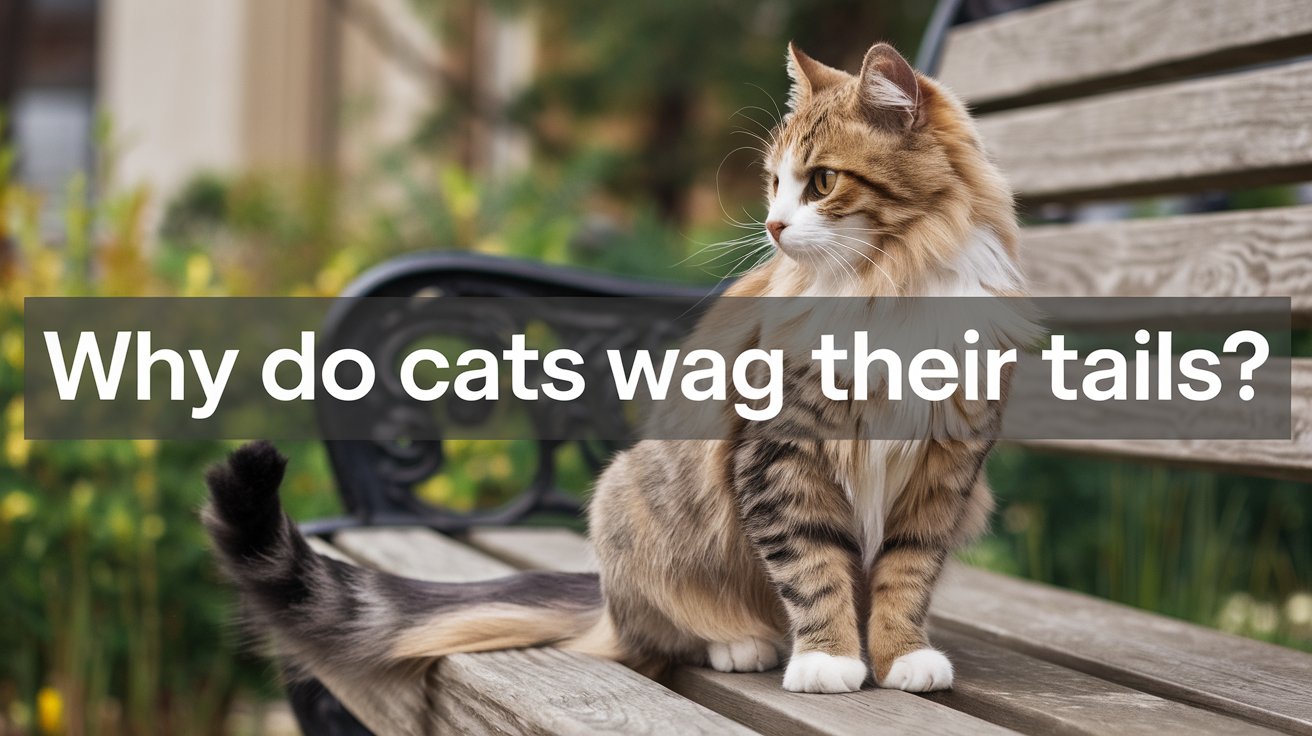
Table of Contents
ToggleWhy Do Cats Wag Their Tails?
Cats wag their tails to communicate their feelings and intentions. Unlike dogs, a wagging cat tail often indicates a range of emotions, from irritation to curiosity. If a cat’s tail is twitching or moving quickly, it could mean they’re feeling agitated or overstimulated. A slow wag might suggest the cat is focused or thinking, while a puffed-up, rapidly wagging tail signals fear or aggression. Understanding your cat’s tail movements can help you better interpret its mood and responses in different situations.
Unlike dogs, who often wag their tails as a sign of happiness, a cat’s tail wagging can mean many different things. So, let’s dive in and explore what your cat might be trying to tell you with its tail.
What Does Tail Wagging Mean in Cats?
Before we go further, it’s important to note that cat tail wagging differs greatly from dog tail wagging. While a wagging dog is usually happy or excited, a cat may wag its tail for reasons ranging from curiosity to irritation. Your cat’s tail movement can provide insight into their mood or intention.
The Anatomy of a Cat’s Tail
A cat’s tail is more than just an appendage; it’s a key part of their communication system. Composed of bones, muscles, nerves, and blood vessels, the tail is highly sensitive and controlled by a complex network. This structure allows cats to make precise movements, whether they’re balancing on a high ledge or showing off their mood through subtle tail twitches.
Different Types of Tail Movements
Quick Wagging
If your cat’s tail is wagging quickly from side to side, it’s a sign that they feel agitated or annoyed. This kind of tail wagging often happens when a cat is overstimulated during petting.
Slow Swishing
A slow, deliberate swish of the tail usually indicates that a cat is deep in thought, perhaps observing something intently or deciding their next move.
Twitching Tail Tips
When only the tip of a cat’s tail twitches, it’s often a sign that they are focused on something or slightly annoyed. You might see this when they’re getting ready to pounce on a toy—or when they’ve had enough of your cuddles!

Why Do Cats Wag Their Tails When They’re Happy?
Contrary to popular belief, cats sometimes wag their tails when they’re feeling relaxed and content. A gentle, slow wag, often paired with purring, is a sign of comfort and affection. You might notice this when your cat is resting beside you, letting you know they’re happy in your presence.
Cats Wagging Their Tails When They’re Angry or Annoyed
A cat that is rapidly swishing its tail from side to side is likely annoyed or agitated. This is a defensive movement, and it’s best to give your cat some space if you notice this behavior. Overstimulation from petting or playing can cause these irritated tail wags.
Tail Wagging in Cats During Hunting or Playing
Cats are natural hunters, and their tails play a crucial role in their stalking and hunting behavior. When a cat is fixated on prey—real or imaginary—their tail will often twitch or wag in excitement. This behavior is common during play sessions, especially with toys that mimic small animals.
Tail Wagging When Cats Are Curious
Curiosity may have killed the cat, but it certainly makes their tails wag! When a cat is investigating something new or unfamiliar, you’ll notice their tail moving in slow, calculated motions. This cautious wag indicates they’re processing the situation and determining if it’s safe.
Why Do Cats Wag Their Tails in Their Sleep?
Ever seen your cat’s tail twitch while they’re snoozing? Just like humans, cats dream—and their tail movements during sleep are a reflection of this. They may be dreaming of chasing mice or simply reacting to dream stimuli, resulting in those tiny tail flicks.
Do All Cat Breeds Wag Their Tails in the Same Way?
Though all cats use their tails to communicate, some breeds are more expressive than others. For example, breeds like the Siamese tend to be more vocal and animated, and their tail movements may be more noticeable compared to a more reserved breed like the British Shorthair.
How to React When Your Cat Wags Its Tail
The way you respond to your cat’s tail wagging should depend on the context. If they seem relaxed, feel free to continue what you’re doing, like petting or playing. But if they’re showing signs of agitation, it’s best to give them some space and time to calm down.
Misconceptions About Cat Tail Wagging
A common misconception is that wagging always means a cat is happy. This is far from the truth, as cats have a wide range of emotions that can be expressed through their tail. Understanding these subtleties is key to better communication with your feline friend.
Cats Using Their Tails for Balance
Beyond communication, a cat’s tail serves as a critical tool for balance. Whether they’re climbing, jumping, or making sharp turns, the tail acts as a counterbalance that helps them stay agile and graceful.
Do Cats Wag Their Tails to Communicate with Humans?
Yes, cats often use their tails to communicate with humans. While meowing may get your attention, a wagging tail can tell you more about their emotional state and what they want or need from you at that moment.

Conclusion
Understanding why cats wag their tails is like unlocking a secret code to their emotions. From happiness and curiosity to irritation and playfulness, each wag tells a unique story. By paying close attention to their tail movements, you can deepen your bond with your cat and ensure they’re as happy and comfortable as possible.
FAQs
- Do cats wag their tails when happy?
Yes, cats may wag their tails slowly when they’re happy or relaxed, especially while lounging or being petted. - What does it mean when cats wag their tails?
Cats wag their tails for various reasons, including excitement, curiosity, irritation, or even contentment, depending on the speed and movement of the wag. - Why do cats wiggle their tails while lying down?
Cats may wiggle their tails while lying down to express mild contentment or slight irritation. It can also be a reaction to something catching their attention. - Why does my cat flick his tail while cuddling?
Tail flicking during cuddling often means your cat is becoming overstimulated or slightly annoyed, signaling they may want a break. - Why do cats go crazy when you scratch their back?
Cats can become very excited or overstimulated when you scratch certain areas of their back, often because it triggers a nerve response that feels intense or ticklish to them.

I am a dedicated writer and expert in cats, with years of experience studying feline behavior, health, and breeds. Passionate about sharing my knowledge, I provide valuable insights and practical advice to help cat lovers understand and care for their furry companions. When not writing, I enjoy spending time with my beloved cats, continually learning and deepening my expertise.

Leave a Reply